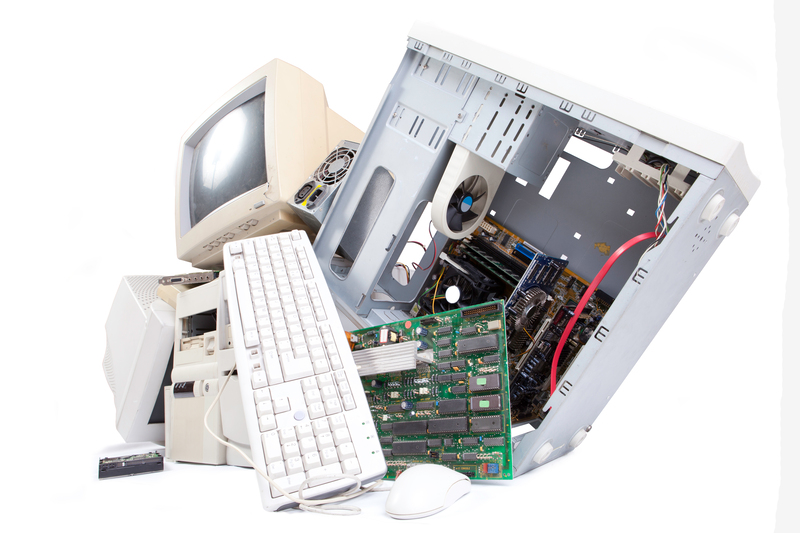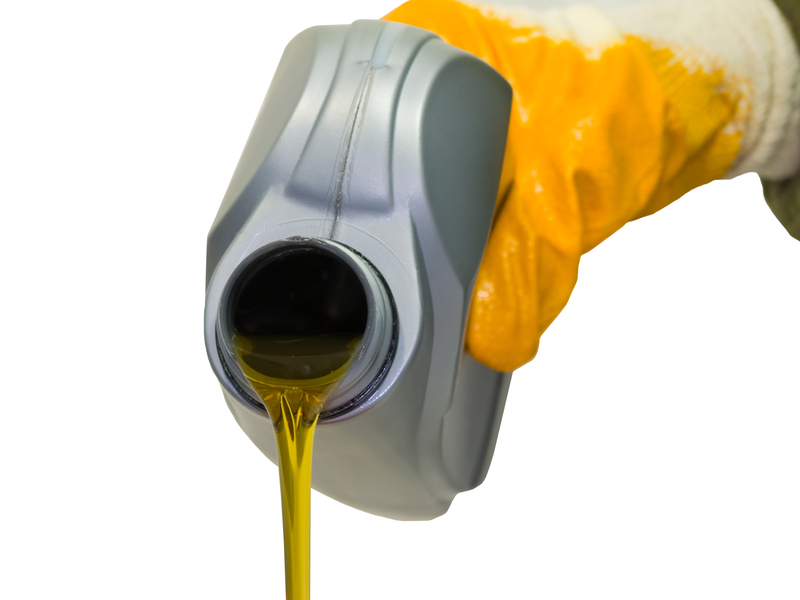Zero Waste Kitchen: Disposing and Recycling Cookware the Smart Way
A truly zero waste kitchen means so much more than simply reducing food scraps or ditching plastic. It's about extending the concept of sustainability into everything we use, including the pots & pans we cook with! Whether your skillet is scratched beyond repair or your non-stick frying pan has served its time, responsibly disposing and recycling kitchen cookware is crucial for minimizing environmental impact. In this comprehensive guide, discover the smart, eco-friendly ways to recycle and repurpose cookware--from aluminum to cast iron--and learn how every kitchen can contribute to a greener planet.
Why Embrace a Zero Waste Kitchen?
Shifting towards a zero waste kitchen is about waste reduction, resourcefulness, and intentional consumption. Cookware, once destined for landfill, can become a raw material for new products or gain a second life through creative reuse. The advantages of a zero waste approach are many:
- Reduces landfill space and pollution
- Conserves resources and energy by recycling metals
- Cuts greenhouse gas emissions associated with producing new products
- Promotes mindful consumer habits
But what do you do when your pans, pots, or utensils have reached the end of their useful life? Discover the smart, sustainable solutions below.

Common Kitchen Cookware: Materials and Challenges
Kitchen cookware comes in a wide variety of materials, each with its own recycling process and environmental impact. Understanding these types is the first step in disposing and recycling cookware the smart way.
- Aluminum: Lightweight, conductive, and 100% recyclable.
- Stainless Steel: Durable, rust-resistant, and highly sought after by scrap dealers.
- Cast Iron: Incredibly sturdy, infinitely recyclable, and even reusable with sanding/restoration.
- Copper: Excellent conductor and valuable for metal recycling.
- Non-Stick (Teflon, ceramic-coated, etc): More complicated because of coatings, may require special handling.
- Glass and Ceramic: Less commonly recycled, but often repurposed.
- Silicone: Non-toxic and sometimes recyclable, depending on local facilities.
The Recycling Challenge
Most municipalities do not let you toss old pans or pots in your regular curbside recycling bin. Why? The combination of metal alloys, handles, and coatings complicate the recycling process. Specialized facilities or scrap metal collectors are usually your best bet--but that's just one path of many in the zero waste journey.
Disposing Cookware the Smart, Zero Waste Way: Options Explored
1. Reduce, Reuse, Repurpose: Give Your Old Cookware New Life
Before considering disposal, see if your cookware can be reused or repurposed in creative ways. This is the easiest, most zero waste option. Here are some ideas:
- Donate: If your items are still usable, donate to shelters, community kitchens, or thrift stores.
- Garden Planters: Poke drainage holes and transform enamel or metal pots into quirky outdoor plant holders.
- Bird Baths or Feeders: Large ceramic or metal lids can be upcycled for the garden.
- Organizer: Old muffin tins make great organizers for small items in a craft room or drawer.
- Wall Art: Cast iron skillets or decorative vintage pans can become rustic wall decor.
- DIY Projects: Use handles as drawer pulls or pan bodies to make clocks, mirrors, or chalkboards.
Pro Tip: For inspiration, search "upcycled cookware project" online--you'll find endless creative solutions!
2. Repair and Restore: Extend the Life of Your Cookware
Some cookware is built to last--and with a little effort, it can serve your kitchen for decades. Consider these restoration tips:
- Reseason cast iron pans by scrubbing, drying, and applying a fresh coat of oil, then baking.
- Polish stainless steel with a paste of baking soda and water to remove stains or discoloration.
- Recoat non-stick cookware (some brands offer recoating services).
- Replace handles or lids instead of discarding the whole piece.
When you choose repair over replace, you keep your cookware out of landfills and reduce the demand for new products.
3. Smart Recycling: Turning Pots and Pans into New Products
When reuse isn't possible, the next best step is recycling cookware the responsible way:
Where Can You Recycle Cookware?
- Scrap Metal Yards: Most accept clean aluminum, cast iron, and stainless steel pans, even with minor plastic parts attached.
- Household Hazardous Waste Events: Some communities hold specific days for hard-to-recycle items like non-stick pans.
- Manufacturer Take-Back Programs: Leading brands (e.g. Calphalon, Le Creuset) sometimes offer recycling for their products.
- Specialty Recyclers: Search for companies that accept cookware for responsible material sorting and recycling.
Preparation Tips for Recycling:
- Remove plastic handles or lids where possible (check if separate materials are allowed).
- Clean cookware thoroughly to remove food or oil residues.
- Check with the recycling facility about which items are accepted and any special instructions.
- Group by material: Keep aluminum, cast iron, and stainless steel separated
Special Note on Non-Stick and Teflon-Coated Cookware
Non-stick pots and pans present a unique challenge because of chemical coatings like PTFE (Teflon). Many scrap yards don't accept them, as the coating can contaminate metal recycling. Some solutions:
- Contact the manufacturer to see if they have a take-back program.
- Inquire at a local hazardous waste collection facility.
- Carefully remove handles and coatings before recycling (for advanced DIYers--check safety precautions first).
- Seek creative reuse options--use as planters or crafting supplies rather than sending to landfill.
4. Disposing Responsibly: Last-Resort Solutions
If repair, reuse, or recycling isn't possible--especially for heavily damaged non-stick or composite cookware--responsible disposal matters:
- Landfill as a last resort: Wrap sharp edges and mark the bag to protect waste collectors.
- Avoid illegal dumping: Never leave old cookware in natural areas or vacant lots.
- Document your process: Be transparent about what you had to landfill and research better solutions for next time.
Cookware Types and Smart Disposal Methods
Aluminum Pans
- Highly recyclable and accepted at most scrap yards.
- Remove plastic/silicone/rubber handles if possible.
- Clean and dry thoroughly.
Stainless Steel Cookware
- Valuable for scrap due to its durability and metal content.
- Look for recycling centers listing "ferrous" and "non-ferrous" metals; most pans are non-ferrous.
- May be accepted whole or in parts (check in advance).
Cast Iron Skillets
- Infinitely recyclable and cherished by restoration enthusiasts.
- Can be sold or donated for restoration if cherished brands (e.g. Griswold, Lodge).
- Otherwise, take to a scrap metal yard.
Copper Pans
- Highly valuable for recycling--never bin copper cookware!
- Some antique or professional pans may be restored and sold to collectors.
- If not, take to specialized scrap facilities.
Non-Stick/Teflon-Coated Cookware
- Often not accepted in regular recycling due to coatings.
- Contact the manufacturer for a take-back program.
- Use as upcycled planters or donate to art/craft spaces if safe.
- As a last resort, dispose in landfill per local guidelines.
Glass and Ceramic Bakeware
- Not recyclable in most curbside glass programs due to different melting points.
- Repurpose as garden markers, serving platters, or storage.
- Check if there are local ceramic recycling facilities--it's rare but possible.
Silicone Bakeware
- Some specialty recyclers accept silicone; ask local eco-centers for guidance.
- Can be cut into scrubbers or used as reusable molds for crafts.
- Dispose in landfill as last resort.
Best Practices for a Zero Waste Kitchen Revolution
Adopting zero waste kitchen practices isn't a one-time decision but an ongoing mindset.
- Buy quality, buy once: Invest in durable cookware to extend its life and reduce the need for disposal.
- Care for your cookware: Proper cleaning, drying, and storage prevents premature wear and tear.
- Track the end-of-life process: Keep a record of how you dispose or recycle each item so you can improve over time.
- Educate others: Share knowledge about the importance of responsible cookware recycling with friends and family.

FAQs: Zero Waste Cookware Disposal and Recycling
Can I put old pots and pans in my curbside recycling bin?
No, most curbside programs don't accept cookware due to potential contamination and sorting issues. Take them to specialized drop-off or scrap metal centers.
Do scrap yards pay for old cookware?
Sometimes. Value varies based on material (copper and aluminum are most valuable) and local market prices.
What should I do with non-stick pans?
First, check the brand for a take-back program. Many cannot be recycled through normal channels due to Teflon/PTFE coatings.
Can damaged glass cookware be recycled?
Not with normal glass recycling (tempered glass and ceramics must be processed separately). Think repurposing first.
Conclusion: Every Kitchen Counts in the Zero Waste Revolution
Rethinking cookware disposal is a vital part of leading a truly sustainable, zero waste kitchen lifestyle. By choosing to repair, repurpose, or recycle rather than discard, we cut down on waste, conserve resources, and contribute to a healthier planet. Start with your next worn-out frying pan--and make every kitchen upgrade a smart, zero waste decision.
Take Action! Audit your kitchen today and see if any cookware could be better reused, recycled, or donated. Share your zero waste journey with others--the more kitchens that go zero waste, the brighter our world will be.
Helpful Resources and Links
- Earth911 Recycling Center Search: Find Local Scrap Yards & Specialty Recyclers
- Terracycle Cookware Recycling Programs: Terracycle
- Check with your municipal waste department for local events or guidelines on cookware disposal
Lead by example in your own zero waste kitchen and inspire your community to recycle and repurpose cookware the smart way!
